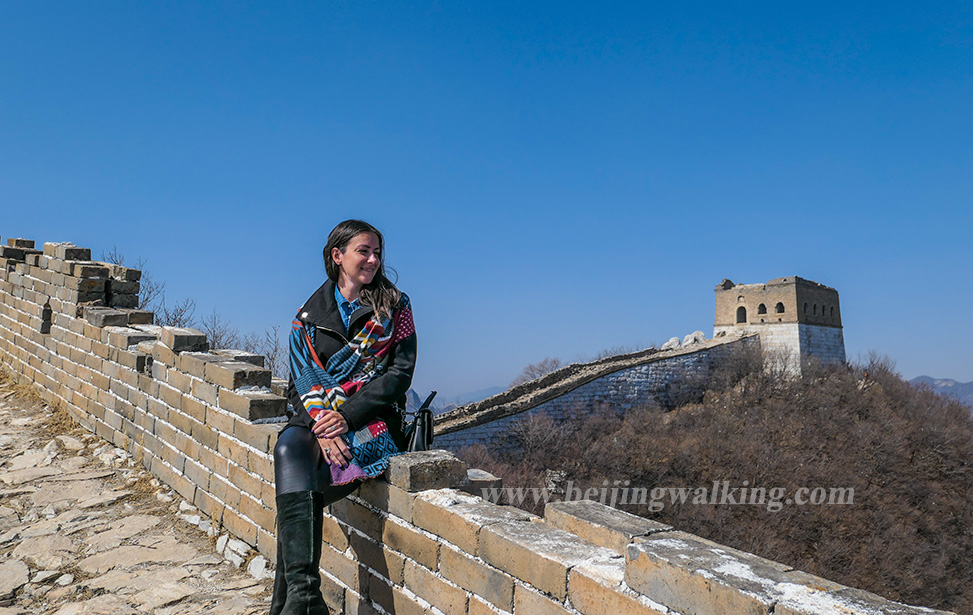Timeless Beijing: Top 10 Ancient Buddhist Temples
Beijing, China’s capital city, is rich in history and cultural heritage. One of the most prominent features of this vibrant city is its ancient Buddhist temples. These temples serve as places of worship for the faithful and stand as architectural marvels that have withstood the test of time. This article will explore Beijing’s top 10 ancient Buddhist temples, each with its unique history and significance.
1. Tanzhe Temple 潭柘寺
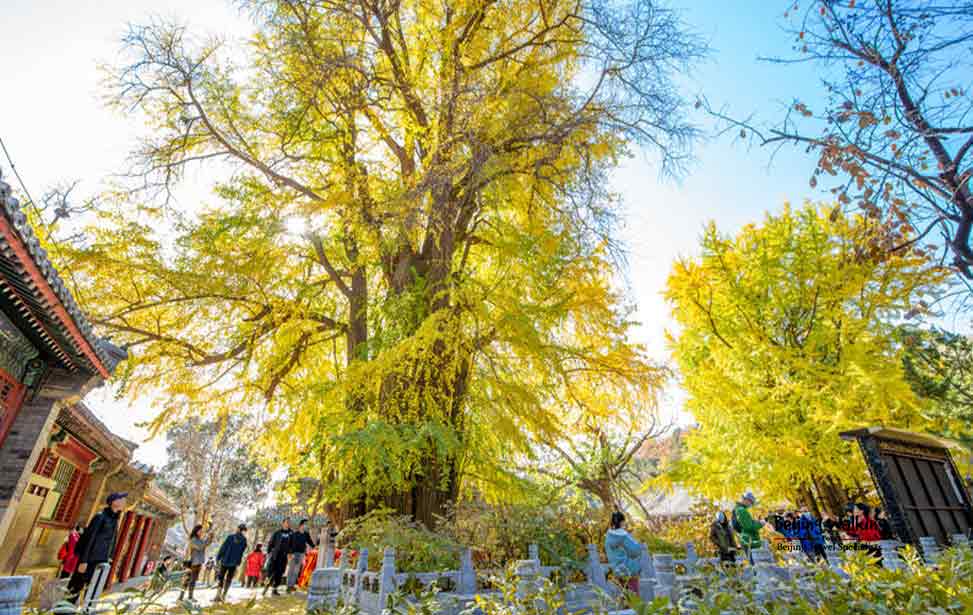
Tanzhe Temple is located at the foot of Tanze Mountain in the southeast of Mentougou District, Beijing, more than 30 kilometers from downtown Beijing. The temple was first built in the Jin Dynasty and is the earliest Buddhist temple built in the Beijing area, with a history of more than 1700 years. The temple is grand in scale, retaining the architectural style of the Ming and Qing dynasties, and is the largest ancient temple complex in the suburbs of Beijing.
2. Hongluo Temple 红螺寺
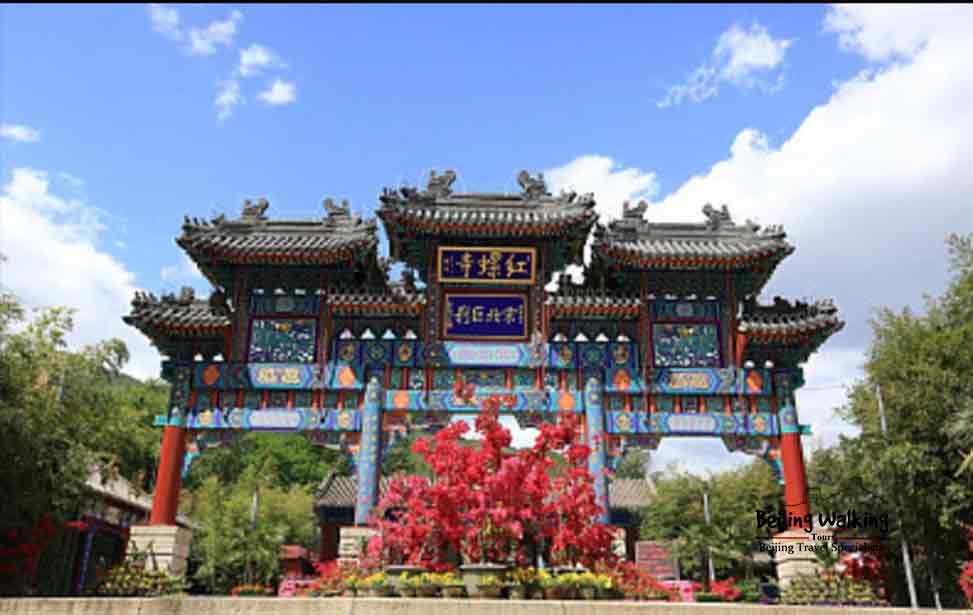
The Hongluo Temple in Huairou District, Beijing, is a thousand-year-old ancient temple renowned as “the Mount Putuo of the North.” Situated with the backdrop of the Hongluo Mountain and facing the Hongluo Lake to the south, the temple is adorned with ancient towering trees, creating a picturesque landscape. As one of the earliest temples following the introduction of Buddhism to China and one of the birthplaces of the Pure Land School, the Hongluo Temple attracts numerous believers and tourists for worship and sightseeing.
3. Guangji Temple 广济寺
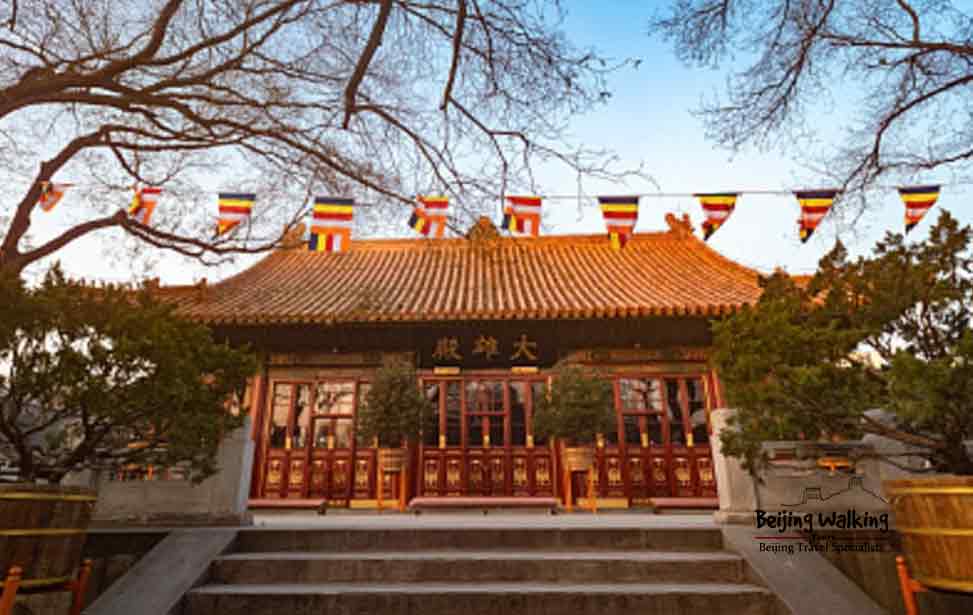
The Guangji Temple in Beijing is located at 25 Fuchengmennei Street, Xicheng District, covering an area of 2.3 hectares. Initially built in the late Song Dynasty, it was known as Xiliu Village Temple. It was rebuilt in the early Tian Shun period of the Ming Dynasty and was renamed “Guangji Temple of Hongci” by Emperor Xianzong in the 2nd year of Chenghua (1466). After the founding of the People’s Republic of China, with the government’s attention, the temple was renovated in 1952, presenting a new look. 1953, the Chinese Buddhist Association was established, with this temple as its headquarters.
4. Jietai Temple 戒台寺
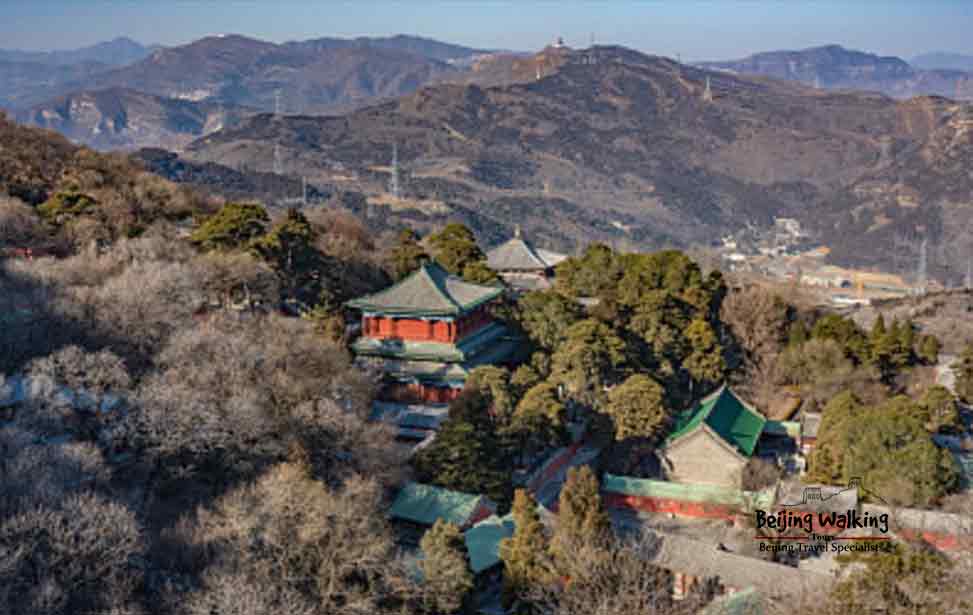
Jietai Temple, also known as Jietan Temple, is located in Mentougou District, Beijing, 35 kilometers from the city center. The temple was established in the fifth year of the Wude era of the Tang Dynasty (622 AD) and was initially named “Huiju Temple.” During the Liao Dynasty, the eminent monk Fajun built a platform for precepts here, attracting numerous monks from all directions, hence the Jietan Temple. Emperor Yingzong of the Ming Dynasty conferred the name “Wanshou Zen Temple.” In the twenty-sixth year of the Guangxu reign of the Qing Dynasty (1900), the temple was severely damaged when the Eight-Nation Alliance invaded Beijing. After the founding of the People’s Republic of China, the Jietai Temple was designated as a critical national cultural heritage site and underwent restoration. The “precept platform” is one of the oldest, largest, and most complete precept platforms in the history of Chinese Buddhism.
5. Fayuan Temple 法源寺
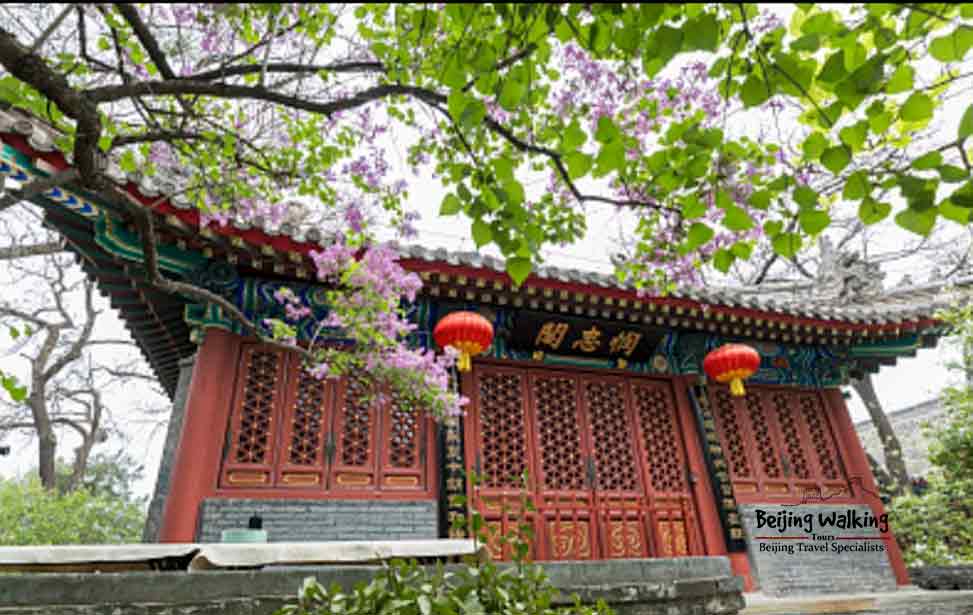
Fayuan Temple is one of Beijing’s oldest and most renowned Buddhist temples. It is located at the southern end of Jiaozuo Alley, Xuanwu District. It was first established in the 19th year of the Zhenguan reign of Emperor Taizong of the Tang Dynasty (645 AD). Covering an area of 6700 square meters, the temple follows a symmetrical layout, with structures including the Mountain Gate, Bell and Drum Towers, Hall of the Heavenly Kings, Hall of the Great Buddha, Maitreya Hall, Hall of Pure Karma, Hall of Infinite Life, Hall of Great Compassion, and the Scripture Hall, arranged from south to north. Fayuan Temple boasts a long history within Beijing and is the city’s most significant ancient Buddhist temple.
6. Dajue Temple 大觉寺
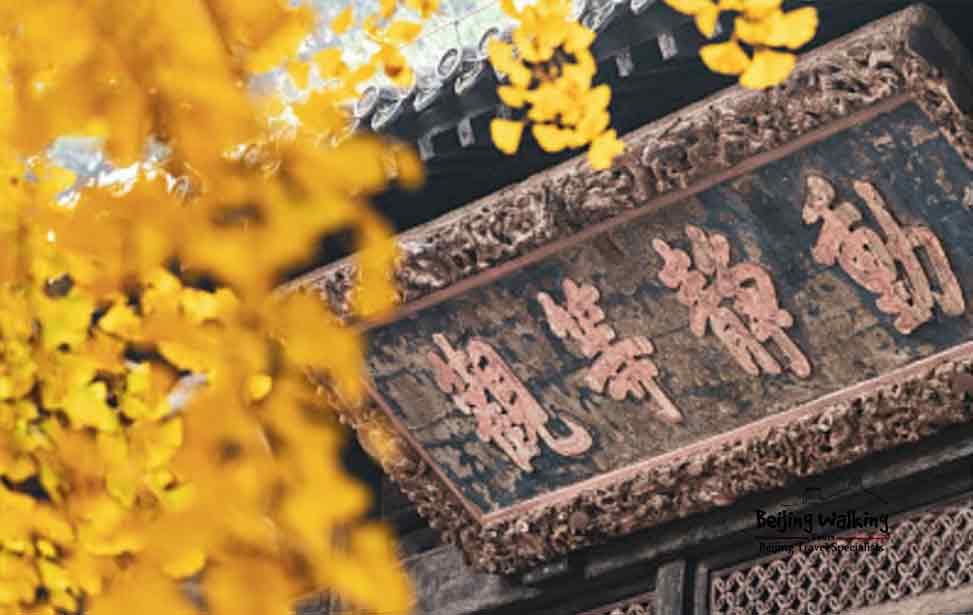
Dajue Temple, also known as Dajue Chan Temple, is located at No. 9 Dajue Temple Road, Sujiatuo Town, Haidian District, Beijing. It was first built in the fourth year of the Xianyong era of the Liao Dynasty (1068) and is one of the eight major water temples in the Western Hills during the reign of Emperor Zhangzong of the Jin Dynasty. It has undergone renovations during the Yuan, Ming, and Qing dynasties. Covering an area of approximately 9,500 square meters, the temple faces west and is built along the mountain. The main buildings include the central temple, the southern palace, and the northern monks’ quarters. Dajue Temple is a well-preserved ancient temple with over a thousand years of history. It is renowned for its ancient Buddha statues, charm, style, and ancient steles, attracting visitors from both within the province and beyond.
7. Lingguang Temple 灵光寺
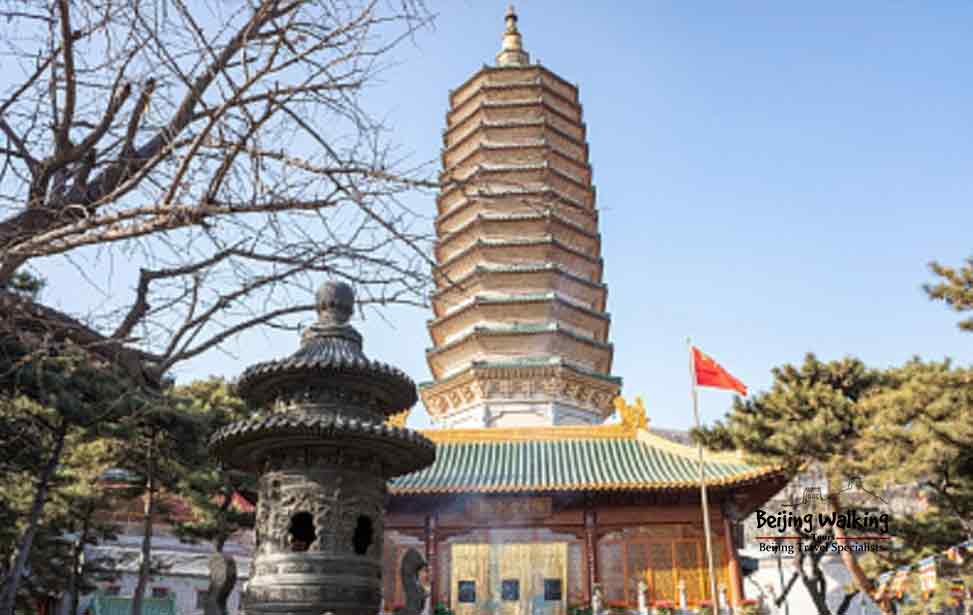
Lingguang Temple, located at the eastern foot of Cuiping Mountain, a branch of the Western Mountains in Shijingshan District, Beijing, is renowned for housing the relic of the tooth of Gautama Buddha, making it one of the focal points for Buddhists from both China and abroad. Initially established during the Dali era of the Tang Dynasty (766-779 AD) under the name Longquan Temple, the temple underwent expansion during the Liao Dynasty and was renamed Jueshan Temple during the Jin Dynasty. After a significant restoration in the 15th year of the Chenghua era of the Ming Dynasty, it was renamed Lingguang Temple, a name it has retained to this day. Lingguang Temple is the second of the Eight Great Temples, nestled against the picturesque Western Mountains, offering a serene and solemn environment and serving as the Buddhist center of Beijing.
8. Yonghegong Lama Temple 雍和宫
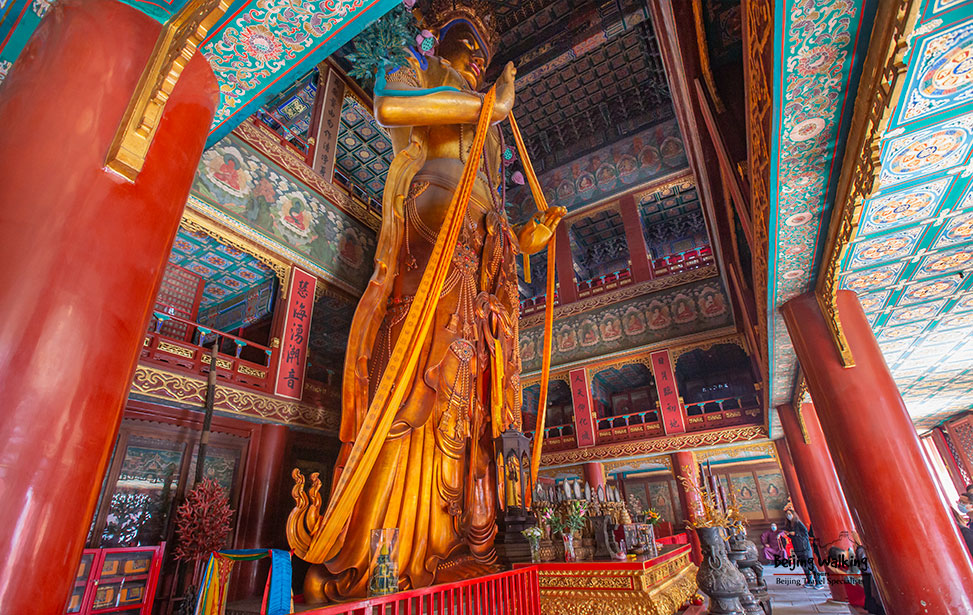
The Lama Temple, the Yonghe Temple, is a renowned Tibetan Buddhist temple in Beijing, China. Initially built in 1694 during the Qing Dynasty, it served as the residence of Emperor Yongzheng before he ascended the throne. Later, in 1744, the complex was converted into a lamasery, becoming one of the region’s most important monasteries of Tibetan Buddhism. The temple is famous for its stunning architecture, including the world’s most giant wooden Buddha statue carved from a single sandalwood tree. With its rich history and cultural significance, the Lama Temple is a prominent spiritual and architectural landmark in Beijing.
9. Guanghua Temple 广化寺
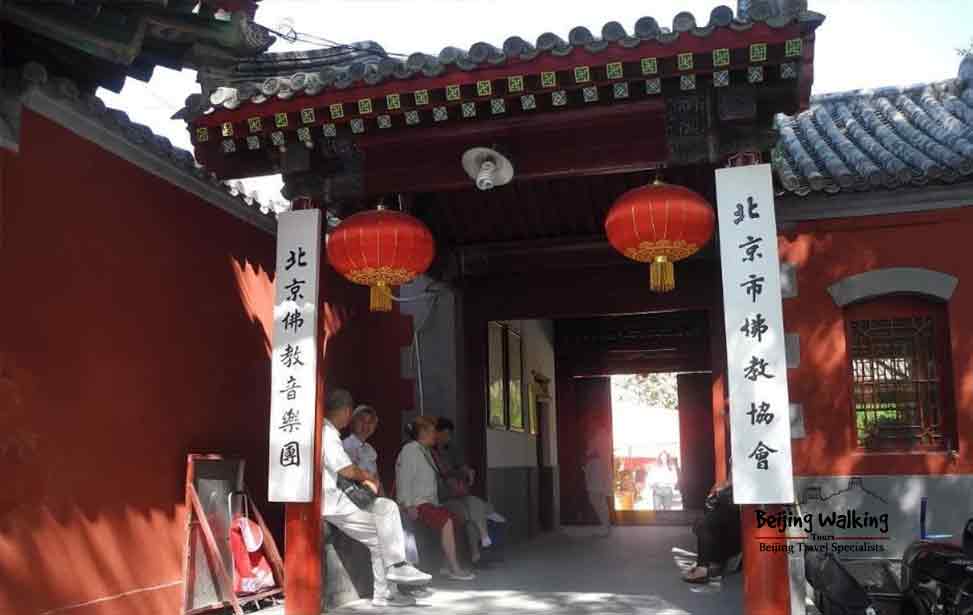
The Guanghua Temple in Beijing is a large Buddhist temple at 31 Ya’er Hutong, north of Shichahai, in the Xicheng District of Beijing, China. It also serves as the headquarters of the Beijing Buddhist Association. Founded during the Yuan Dynasty, it has a history of nearly 800 years and comprises 329 halls, covering an area of over 20 acres, with more than 50 resident monks. The temple upholds the “Three No’s” system, prohibiting climbing on roofs, leaving the premises for social activities, and private fundraising, which has earned it widespread fame. The temple complex includes three main courtyards – the central, eastern, and western – and the Hall of Ksitigarbha, Ancestral Hall, and Abbot’s Courtyard.
10. White Pagoda Temple 白塔寺
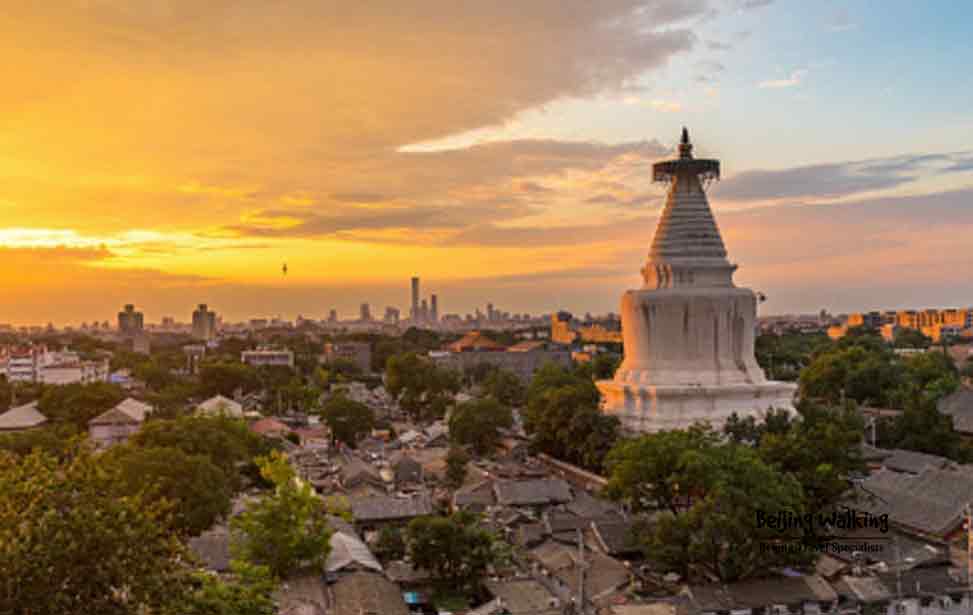
The White Pagoda Temple, also known as Miaoying Baita Temple, is located at 171 Fuchengmen Inner Street, Xicheng District, Beijing. It is a Gelug Tibetan Buddhist temple. Originally built during the Yuan Dynasty and initially named Dasheng Shou Wan An Temple, it was established as a Tibetan Buddhist temple by the Yuan Dynasty to demonstrate their policy of “embracing people from afar.” It was later renamed Miaoying Temple, meaning “wonderful response.” The white pagoda within the White Pagoda Temple was constructed during the Yuan Dynasty and is China’s earliest and largest extant Tibetan-style pagoda. Situated on a platform approximately 70 meters high, the pagoda body, standing at 10 meters, follows the Tibetan style, adorned with 104 hanging bells and crowned with a gilded copper bottle at the top.
Beijing’s ancient Buddhist temples are not only places of worship but also cultural treasures embodying China’s history and traditions. Each temple has unique charm and significance, showcasing past civilizations’ architectural prowess and artistic achievements. By preserving these temples, we ensure that future generations can appreciate the rich heritage of Beijing and continue to be inspired by the timeless beauty of these ancient sites. So, when you visit Beijing, explore these top 10 ancient Buddhist temples and immerse yourself in the spiritual and cultural wonders they offer.






